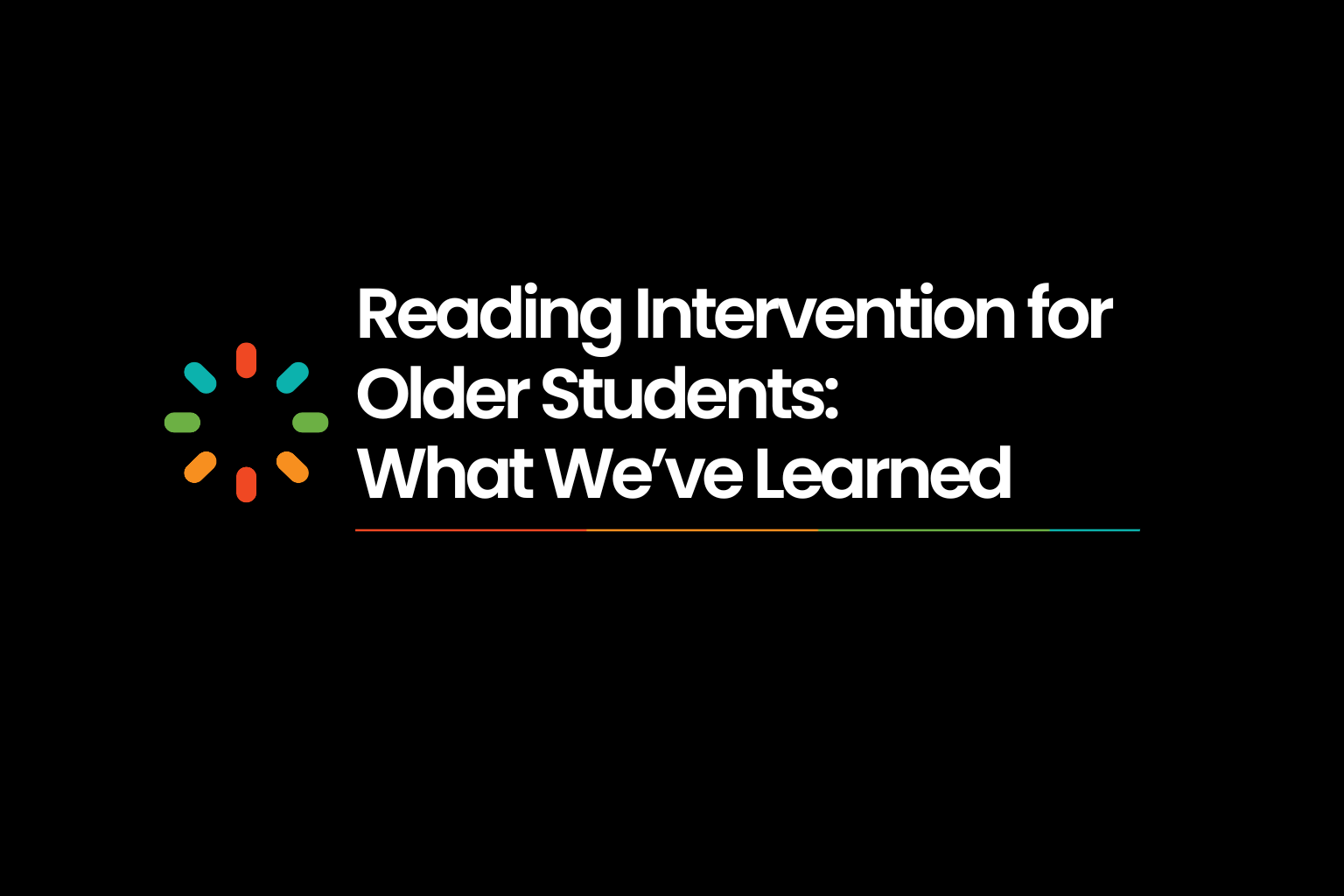Providing literacy support for older students is challenging. Grade-level texts may feature complex grammar and syntax, words that don’t follow typical spelling conventions, abstract concepts, and topic-specific vocabulary. The RAND American Teacher Panel conducted a study on a representative sample of grade 3-8 teachers across all subjects and found the following:
- They estimated that 44% of their students always or almost always have difficulty reading the instructional material used in their classes.
- Nearly three-quarters of the teachers reported needing more resources to identify and support students who struggle with reading.
While this may seem like a reading comprehension crisis, many educators (and parents) realize that the real culprit may be hiding. In short, the underlying issue is that many older students still have difficulty with basic reading skills.
The "Decoding Threshold" and Older Students
There’s a common saying that by grade four, students are “reading to learn, not learning to read.” This isn’t the reality for most classrooms in America. In fact, in an article co-authored by Rebecca Kockler and Rebecca Sutherland (the Executive Director and Associate Director of Research of Reading Reimagined) the idea that students have all the decoding skills they need by the end of third grade may be hurting efforts to help older students.
In 2019, a landmark study funded by the Institute of Education Sciences identified the relationship between older students’ foundational literacy skills and reading comprehension. The study also introduced the concept of the “decoding threshold.” This threshold is the measurable point where a student has enough basic reading skills to understand more complex reading tasks. Researchers found that students below this threshold made little to no progress in reading comprehension and were unlikely to improve unless they received reading intervention in decoding.
These findings were confirmed in a newer report funded by Reading Reimagined (part of the Advanced Education Research and Development Fund, a national nonprofit for innovation in PreK-12 education) and conducted by the Education Testing Service (ETS). This study found the following:
- Only a third of upper elementary and middle school U.S. students could read grade-level texts independently.
- Students below the decoding threshold progressed more slowly in vocabulary, sentence processing, and reading comprehension.
- Students with poor decoding skills made less effort to read unfamiliar words.
Why Isn't Decoding Taught in Older Grades?
The simple solution would be to teach, or at least review, phonics, decoding, and other foundational literacy skills. However, there are a myriad of reasons why this isn’t practical:
- Schools don’t regularly assess word recognition skills after the third grade.
- There may be discrepancies in how much individual schools emphasized phonics instruction in the lower grades.
- Upper elementary and middle school educators are not expected to spend time on basic reading skills, as their learning standards have moved on from these skills.
- Many educators who work with students in the upper grades are not trained to teach basic reading skills.
Since this problem is unlikely to be solved during core instruction in Grades 3+, the challenge is providing targeted, differentiated reading intervention to the many older students who require it.
What Weve Learned Using 1:1, Targeted Reading Intervention
Hoot Reading has large-scale partnerships with school districts in the U.S. With two of our biggest district partners, we currently provide 1:1 reading intervention for 763 students in grade 3 or above. Of those students, 633, or 83%, need support in basic phonics skills, which are required to read common one-syllable words like “shirt,” “blade,” and “coast.” These are skills students are expected to have learned in the first grade.
Hoot’s 1:1 tutoring, which meets the research-based requirements to be considered high-impact tutoring, is helping these students address their learning gaps. Our qualified teachers work with each student to learn the unique skills they lack, most of which are no longer addressed in their grade-level classroom instruction. We always start with a comprehensive diagnostic assessment to see what each student needs, rather than relying on grade-level assumptions. Identifying learning gaps is essential to providing effective reading intervention. Our Hoot Reading Assessment follows our scope and sequence and ensures that each skill is mastered before continuing. This data allows us to generate an individual learning pathway for each student, complete with high-quality resources from our instructional library for their tutor. Students have the undivided attention of a qualified tutor trained to deliver explicit, structured literacy instruction.
Older students start with the earliest skill they haven’t mastered, even if these are early word reading skills. Later in the lesson, Hoot tutors use grade-level texts for reading comprehension work, so students are engaged and exposed to grade-level language. This is important, as older students with decoding gaps should not be held back from sophisticated language comprehension work. We believe that our approach, inside safe, private lessons, allows students to both remediate skill gaps in a dignified way and to receive high-quality support in understanding the kind of complex texts they see in their classrooms every day.
Interested in learning more? Find out how Hoot Reading helps students master the reading skills they need, in any grade.
